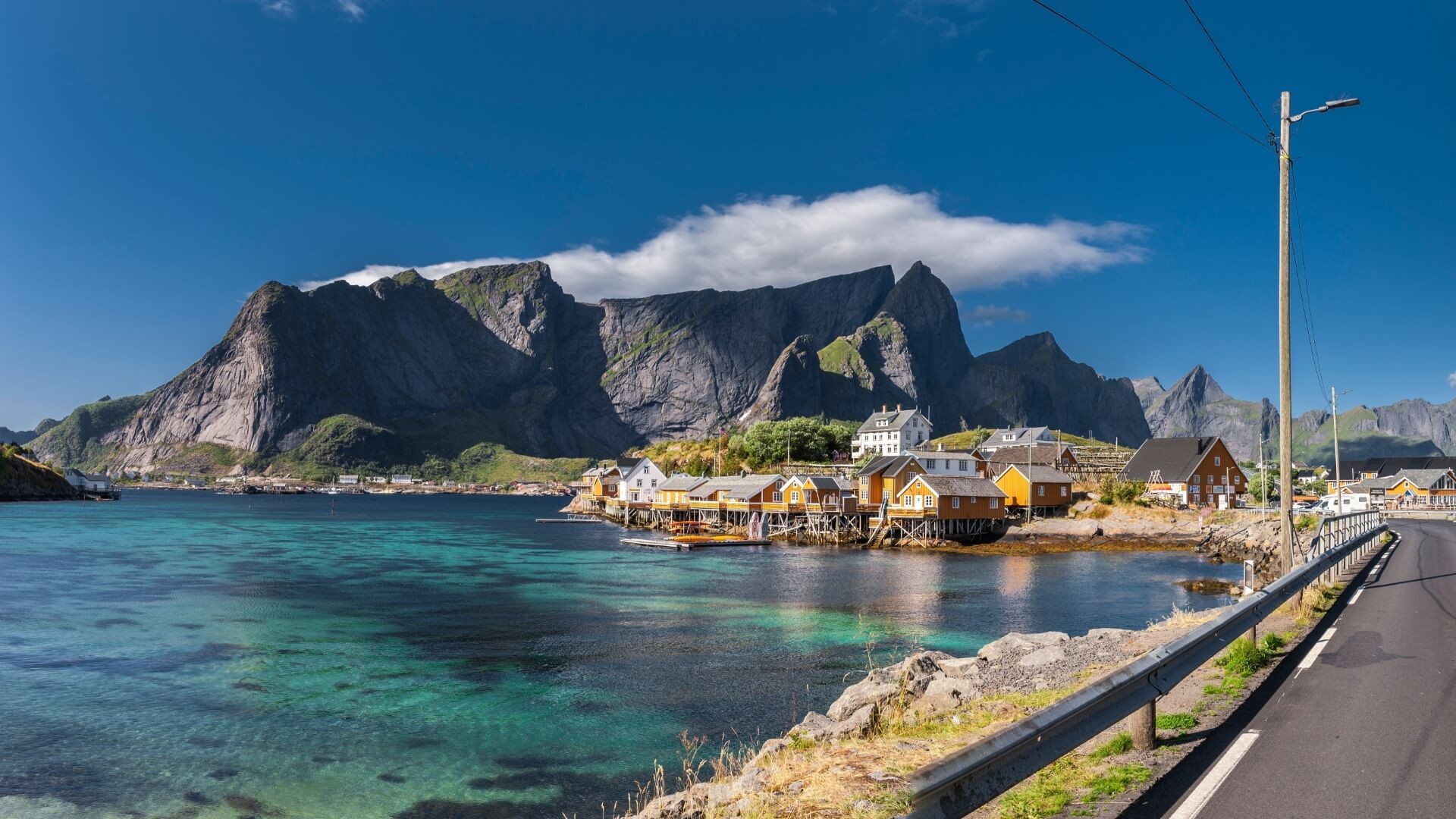Getting to Lofoten
Lofoten is located in northern Norway and is renowned for its breathtaking landscapes, rugged coastline, and charming fishing villages. Reaching this remote archipelago requires some planning, but the journey itself is a part of the adventure. Here’s how you can get to Lofoten, no matter where you’re coming from!
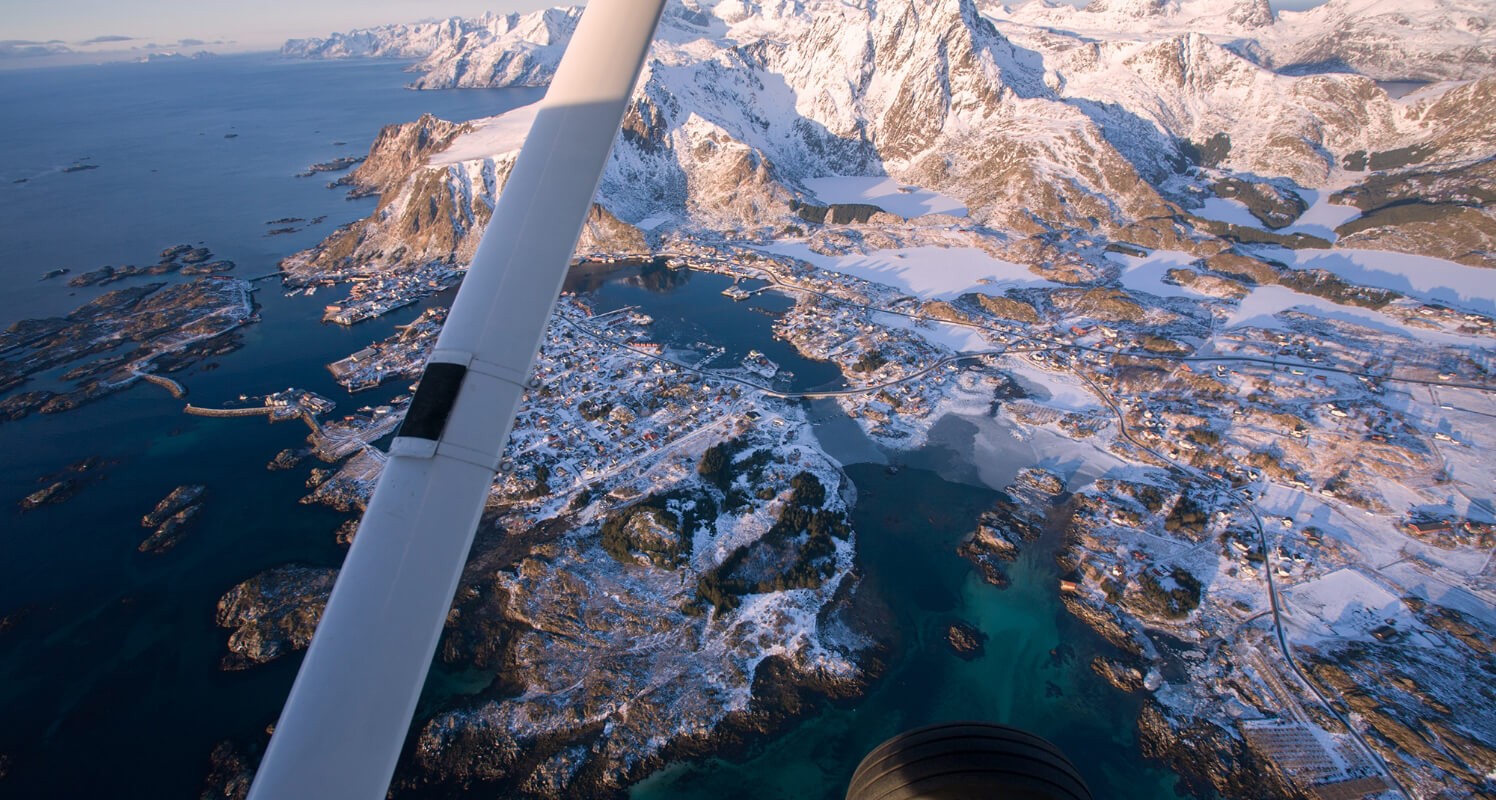
By plane
Flying is the fastest and most convenient way to reach Lofoten from major cities in Norway and Europe.
Closest Airports to Lofoten:
Svolvær Airport (SVJ)
The nearest airport to the central part of Lofoten. Flights to Svolvær are usually from Bodø (BOO), a short 25-minute trip.
Leknes Airport (LKN)
Another small airport serving Lofoten, with connections from Bodø.
Harstad/Narvik Airport (EVE)
The largest nearby airport, located in Evenes, about 2-3 hours by car or bus from Lofoten. It has direct flights from Oslo and other major cities.
Tromsø Airport (TOS)
Though farther from Lofoten, Tromsø is an excellent starting point for those looking to combine a visit to both the Arctic city and the islands. You can fly into Tromsø from Oslo or other European cities and then drive or take public transport to Lofoten.
Flight connections
From Oslo (OSL)
Several daily flights from Oslo to Bodø, Evenes, Leknes, Svolvær, and Tromsø.
From Bodø
Bodø offers frequent connections to Svolvær and Leknes (20-30 min flights).
From Tromsø
Direct flights to Evenes (Harstad/Narvik Airport) or you can drive south through the stunning landscapes of Northern Norway to reach Lofoten.
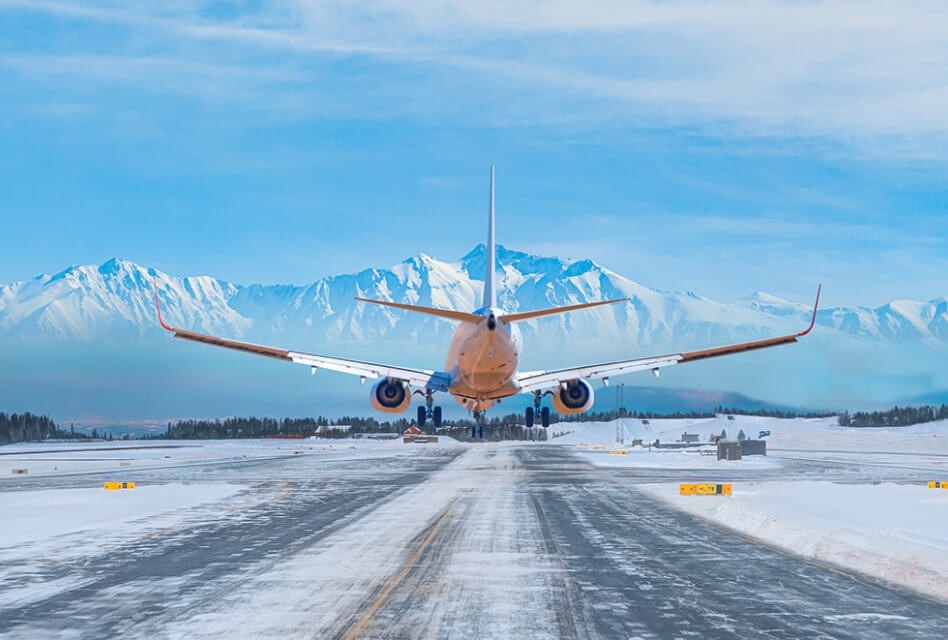
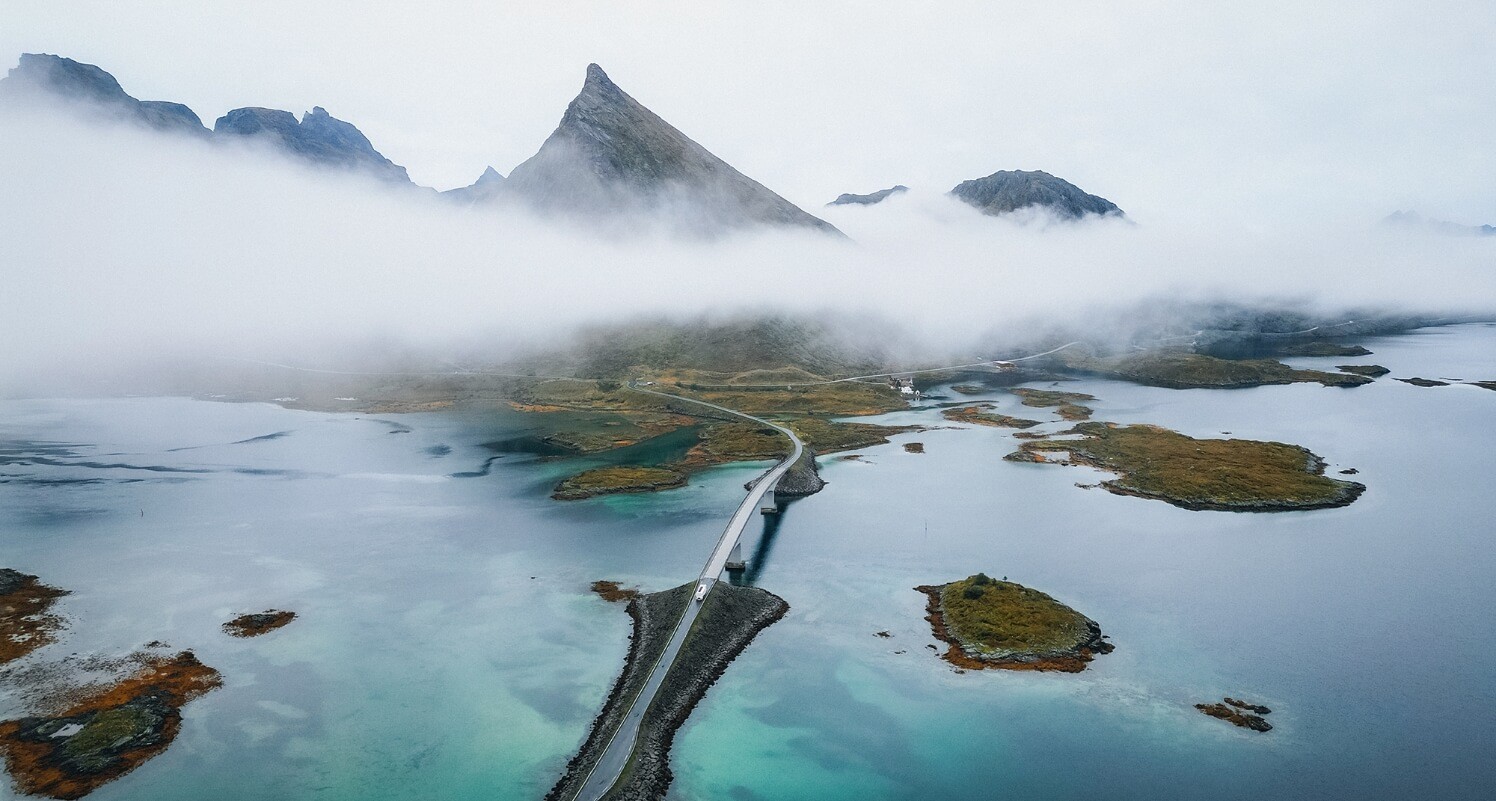
By bus
If you prefer to travel by public transport, there are efficient ferry, bus, and train options.
From Bodø:
Ferry
The ferry from Bodø to Moskenes in Lofoten offers stunning views of the Norwegian Sea and nearby islands. The ferry takes around 3-4 hours and operates multiple times a day, especially during the summer months.
Bus
Once you arrive in Moskenes, you can continue your journey by local bus service. Buses run between Moskenes, Leknes, and Svolvær, allowing you to explore the different parts of Lofoten.
From Evenes (Harstad/Narvik Airport):
Bus
There are direct buses from Evenes Airport to Svolvær, which take approximately 3 hours. The buses are comfortable, and the ride offers fantastic views of the mountains and fjords along the way.
From Tromsø:
Bus
There are bus routes from Tromsø to Lofoten, though travel times are longer (7-8 hours). This route is ideal for travelers looking to explore Northern Norway along the way.
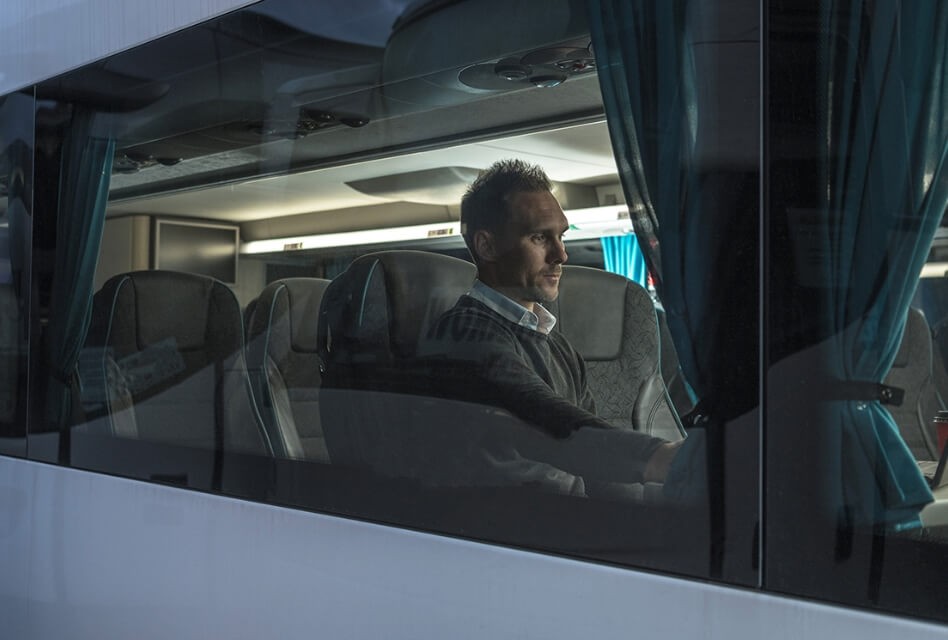
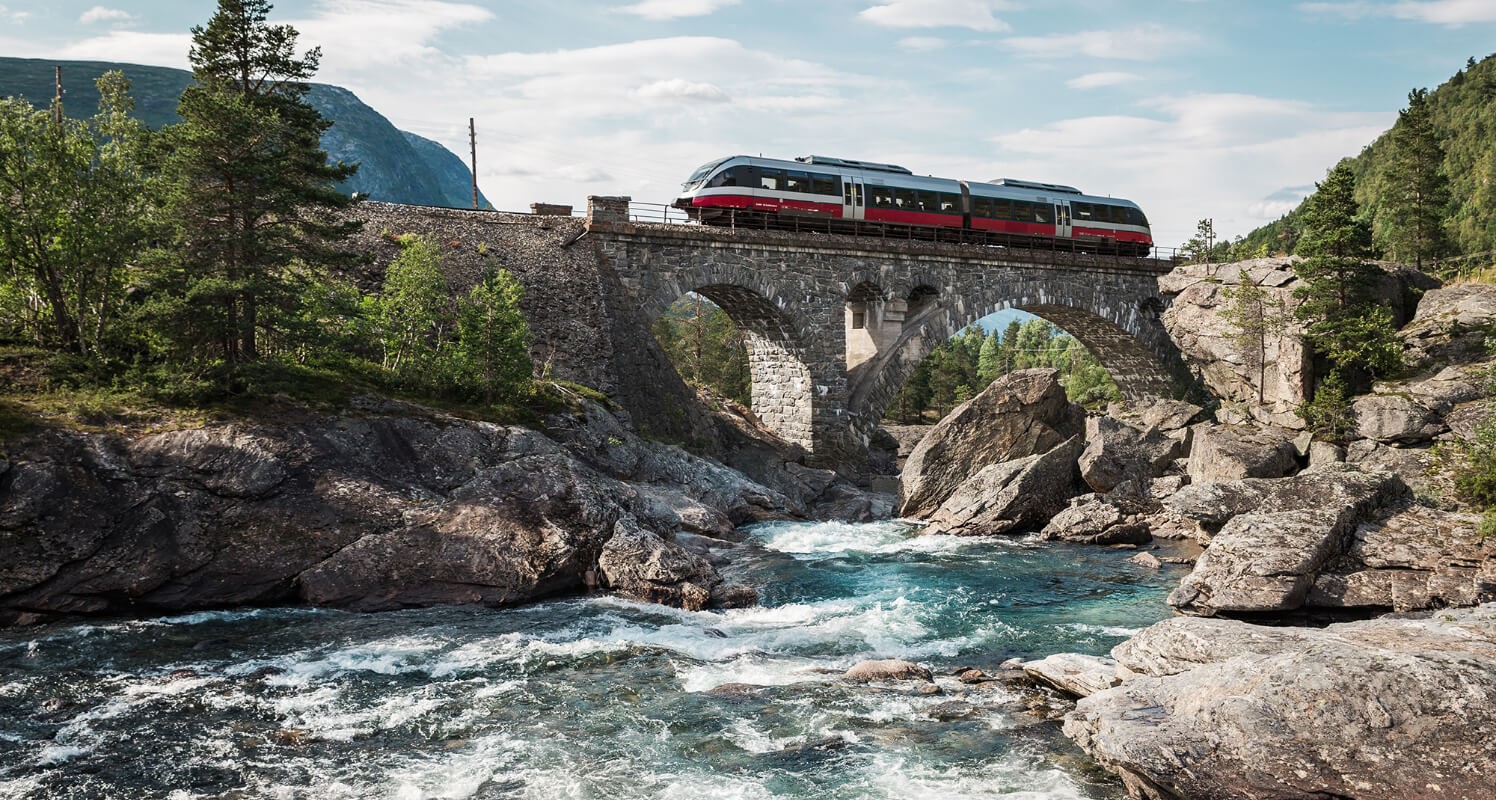
By train
While Lofoten itself is not connected to the national rail network, you can still travel part of the way by train.
From Oslo or Trondheim:
Take a train to Bodø via the Norwegian State Railways (NSB). This scenic route passes through some of Norway’s most spectacular landscapes and takes about 17 hours from Oslo or 10 hours from Trondheim.
Once in Bodø, you can continue to Lofoten by ferry or a short flight.
From Tromsø:
There are no direct train routes from Tromsø to Lofoten, but you can combine bus travel with trains to Bodø or Narvik if you're starting from northern Norway.
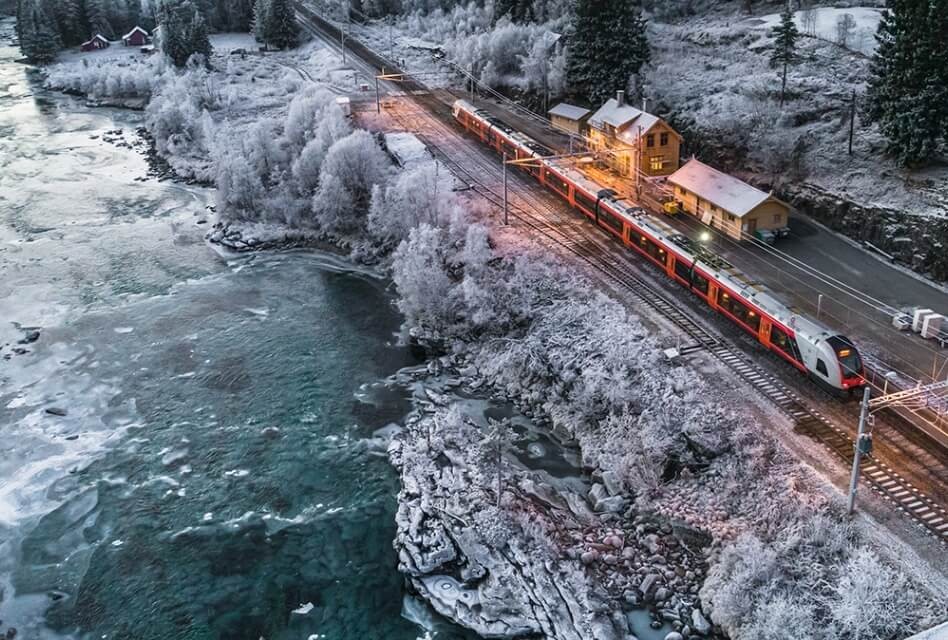

By car
or rental car
Driving to Lofoten offers flexibility and the opportunity to enjoy Norway’s dramatic landscapes at your own pace. Renting a car is a great option for exploring the islands independently.
From Oslo:
The drive from Oslo to Lofoten is about 1,200-1,400 km (750-870 miles) depending on your route, taking around 20-24 hours of driving time. Via E6 and E10: Follow the E6 highway north through Norway, passing through cities like Trondheim. At Fauske, join the E10 highway that takes you directly to Lofoten. This is the most straightforward route. Alternatively you can drive to Bodø and take the ferry to Moskenes in Lofoten. This allows you to break up the trip with a scenic ferry ride.
From Bodø:
If you rent a car in Bodø, you can take the ferry to Moskenes and continue driving through Lofoten.
From Tromsø:
You can also rent a car at Tromsø Airport. The drive to Lofoten from Tromsø takes around 8 hours, passing through stunning Arctic scenery. You can choose to take a scenic detour through Senja, another beautiful island worth exploring.
From Evenes Airport:
You can rent a car at Harstad/Narvik Airport (Evenes) and drive to Lofoten. The journey takes about 2-3 hours, with spectacular views of fjords and mountains along the E10 highway. The road trip itself is worth the journey!
Driving Through Norway:
If you’re on an extended road trip through Norway, the E6 highway connects from southern Norway to Bodø, where you can cross to Lofoten by ferry. From Tromsø, you can follow the E8 and E10 highways.
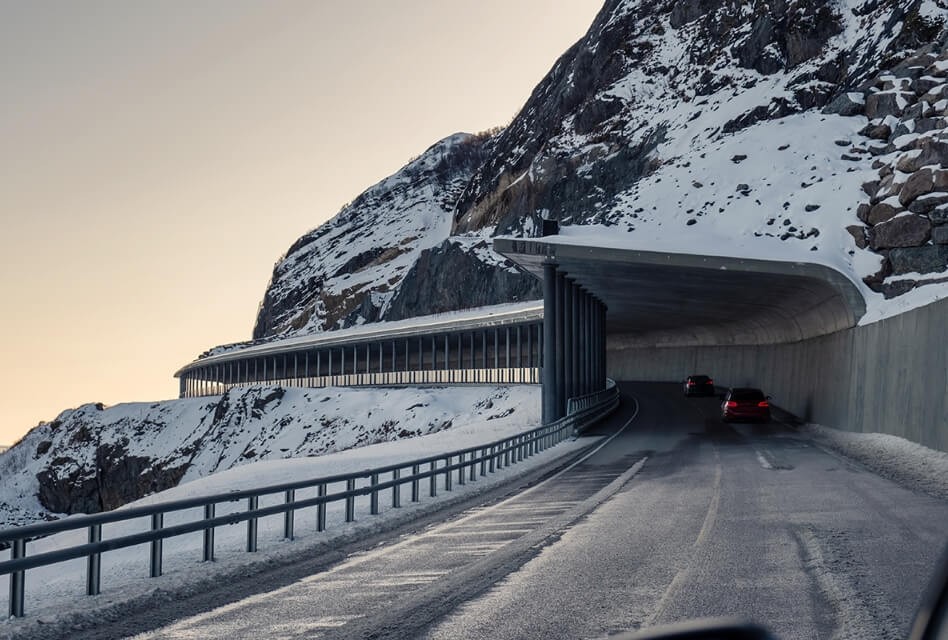
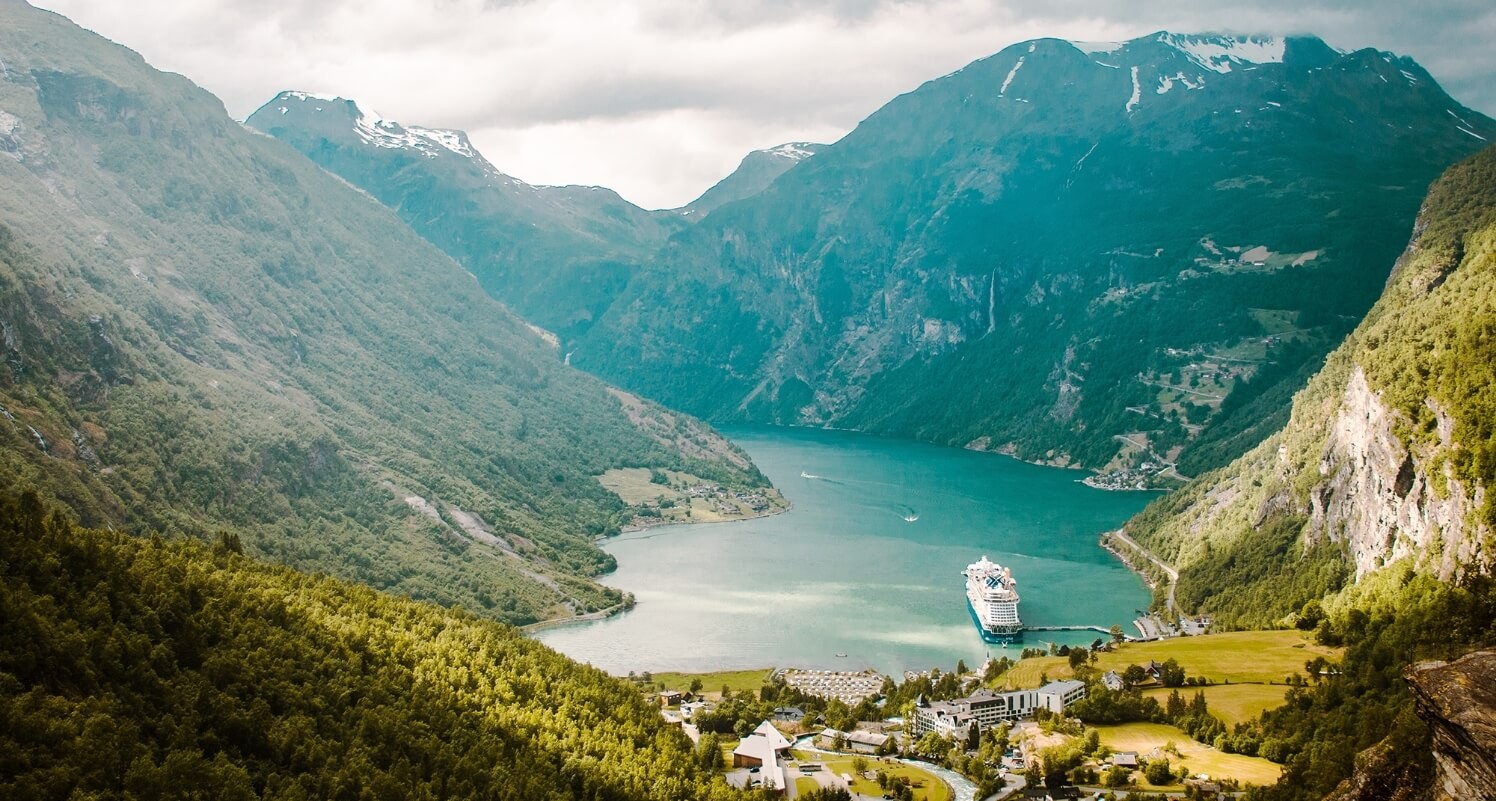
By ferry
Traveling to Lofoten by ferry or boat offers a scenic and relaxing way to experience Norway’s stunning coastal landscapes. Here are the main options:
From Bodø to Lofoten:
The most popular ferry route is from Bodø to Moskenes. This ferry takes about 3-4 hours and runs multiple times daily, especially in summer. The journey offers incredible views of the islands and the Norwegian Sea.
From the Vesterålen Islands:
You can take a ferry from Melbu to Fiskebøl, a short 30-minute crossing, connecting the Lofoten and Vesterålen islands.
Hurtigruten Coastal Cruise:
The Hurtigruten coastal ship, which travels along Norway’s coast, stops at several Lofoten ports, including Stamsund and Svolvær. This is a comfortable and scenic option for exploring the region by sea.

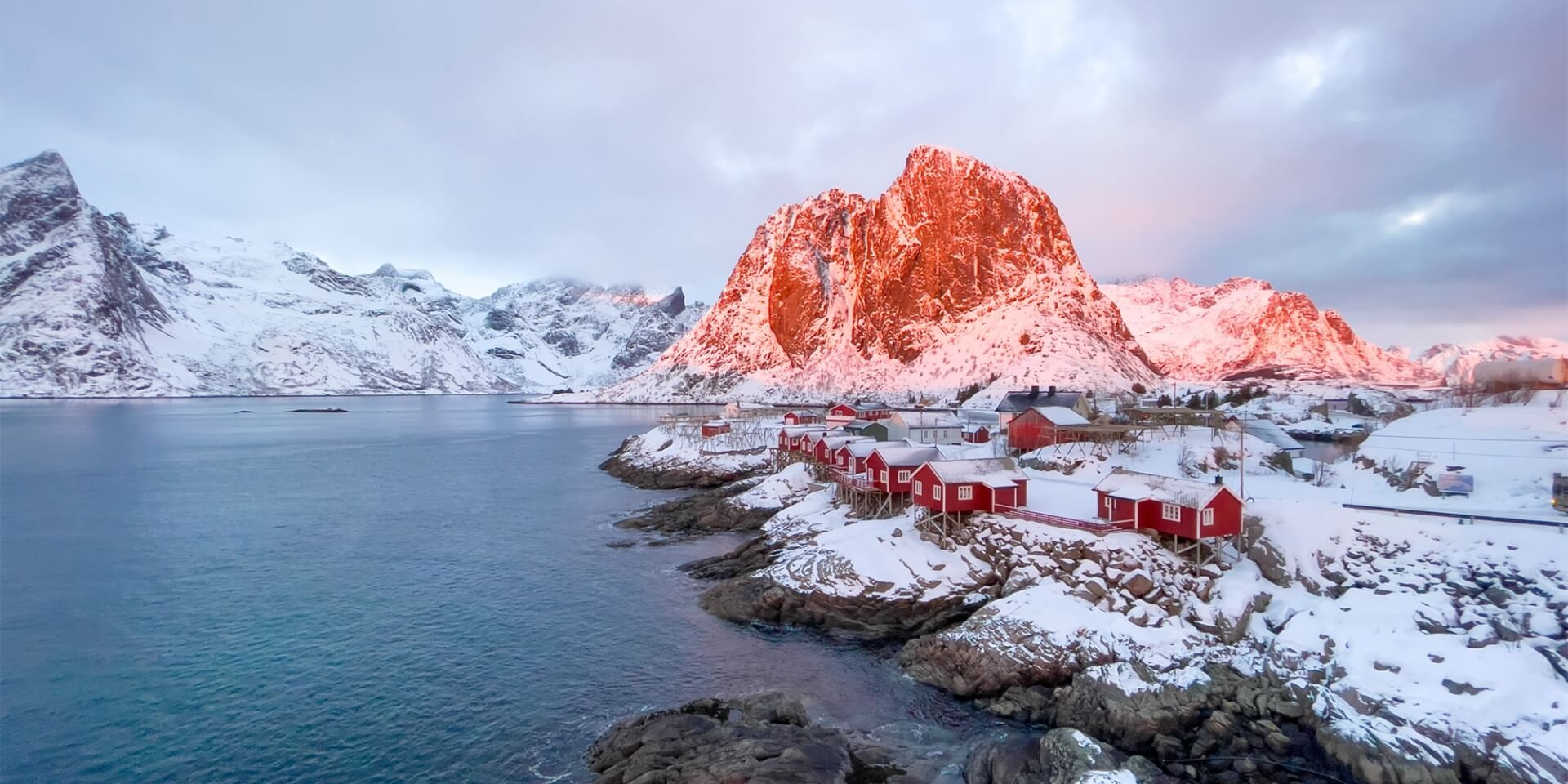
Year-round destination
Winter (December - February):
The winter season brings magical, snow-covered landscapes and long nights, making it prime time for Northern Lights viewing. Winter activities like skiing, snowshoeing, and orca watching are popular, with cozy cabins offering warm havens after outdoor adventures.
Spring (March - May):
Spring in Lofoten is a time of renewal, with longer daylight and milder weather. This season is great for photography as the snow slowly melts, revealing the lush greens of the mountainsides. Wildlife becomes more active, making it perfect for spotting seabirds and enjoying blossoming landscapes.
Summer (June - August):
Summer brings the Midnight Sun (starting 27th of May), allowing for 24 hours of daylight and endless outdoor possibilities, like hiking, kayaking, fishing, and cycling. The warmer temperatures and vibrant natural beauty make it ideal for taking in the turquoise waters and white-sand beaches.
Autumn (September - November):
Autumn is spectacular for fall foliage, casting the islands in golden hues. Shorter days and crisper nights make it a great time to see the Northern Lights again, while avoiding the winter’s harsher weather. Fewer tourists mean quieter trails and a peaceful atmosphere.
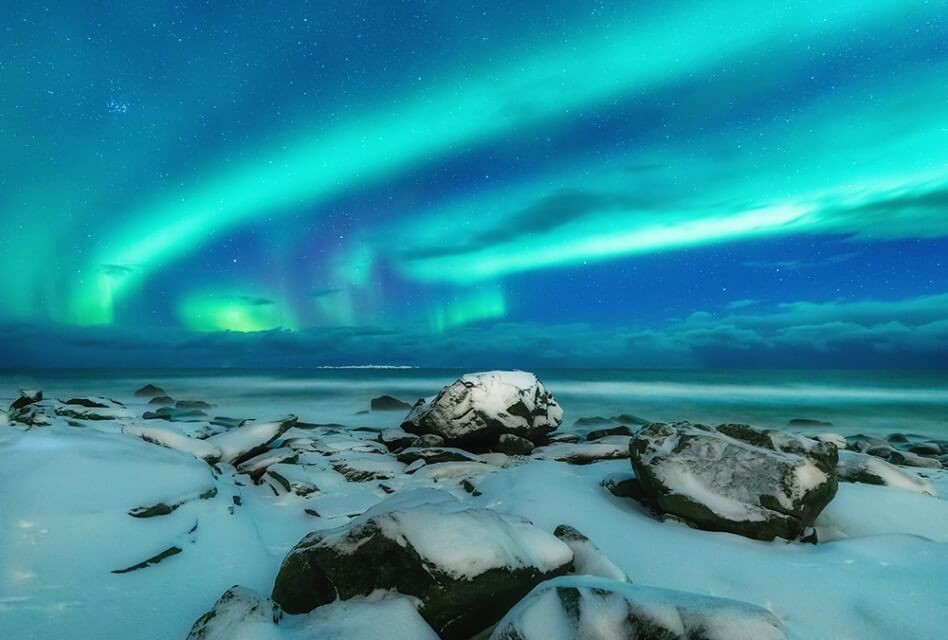
Getting around Lofoten
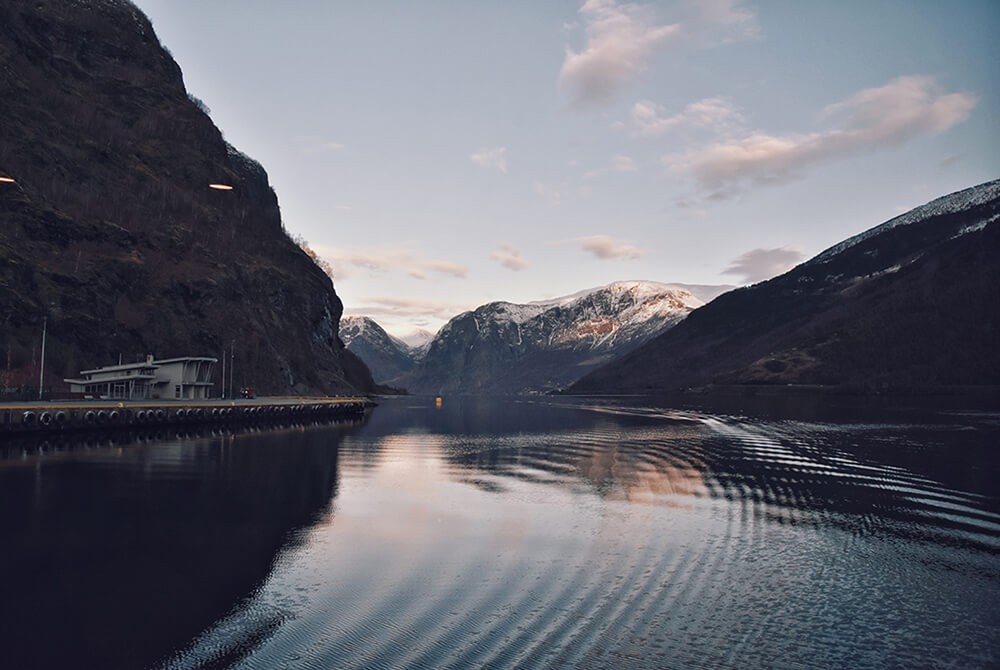
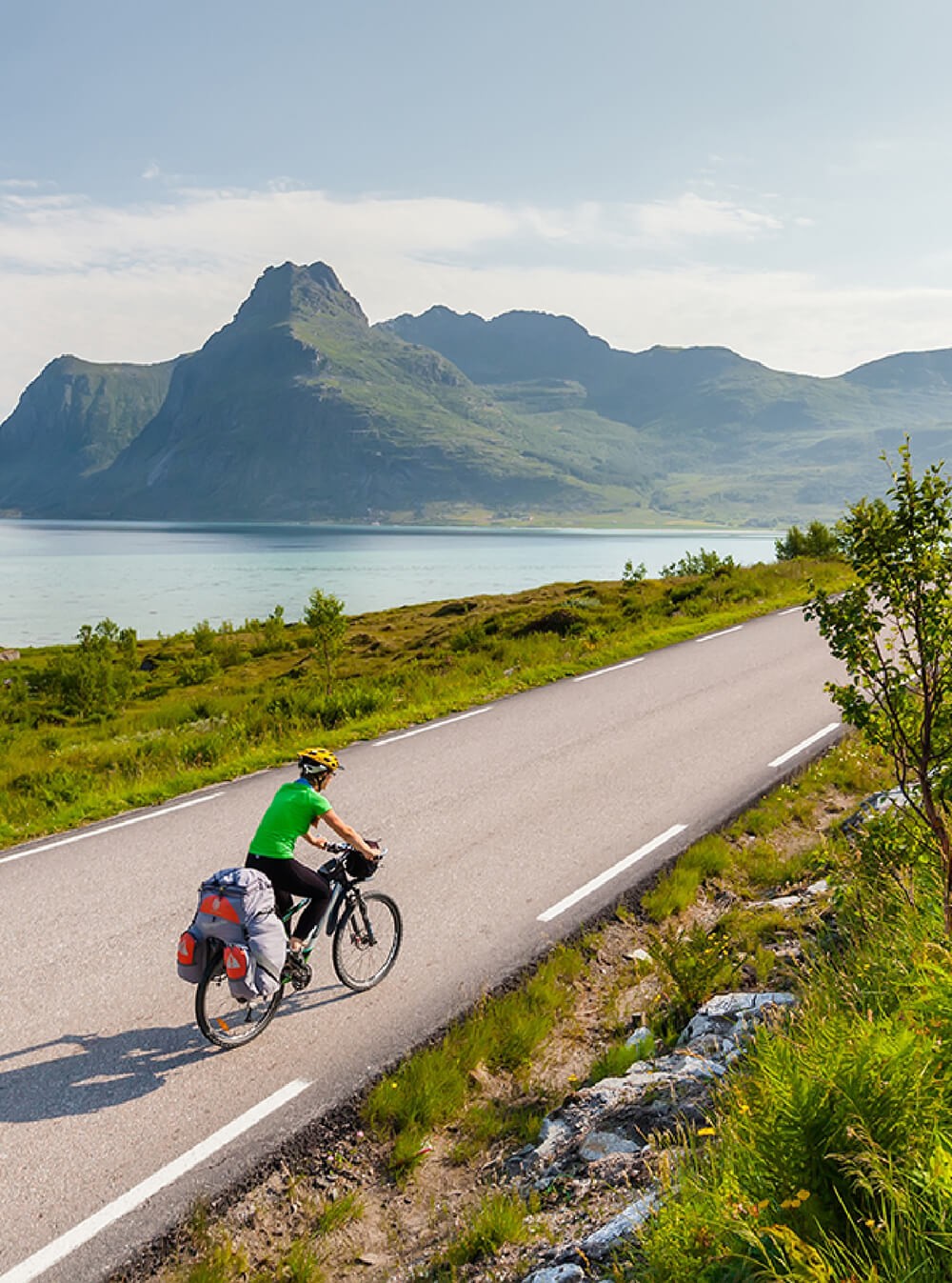
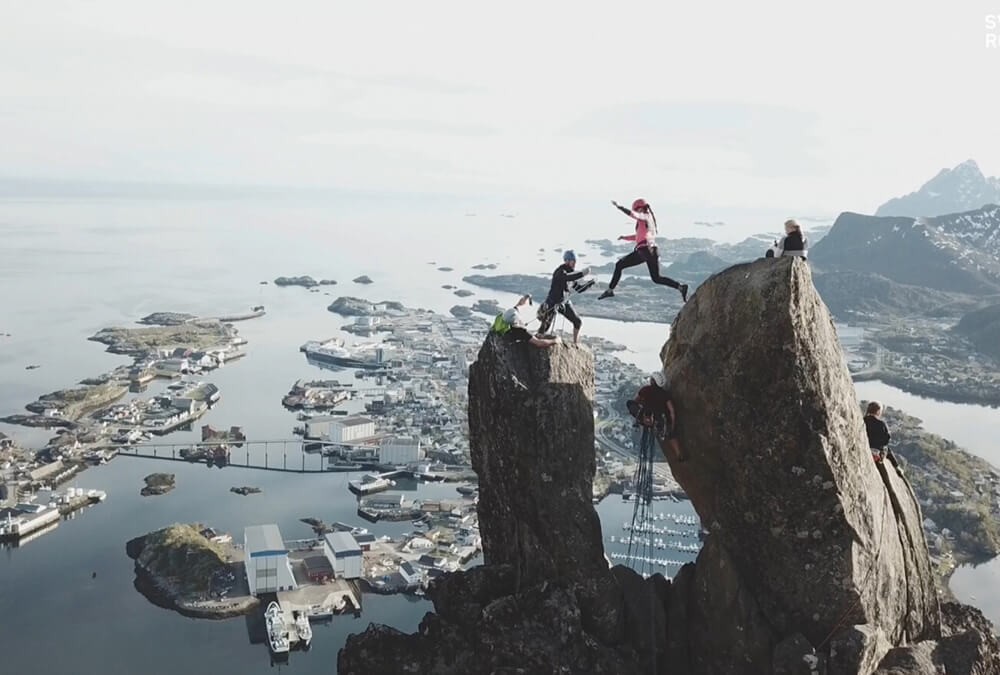



Lofoten’s scenic roads and stunning natural landscapes make it a fantastic place to explore, but getting around the islands requires a bit of planning.
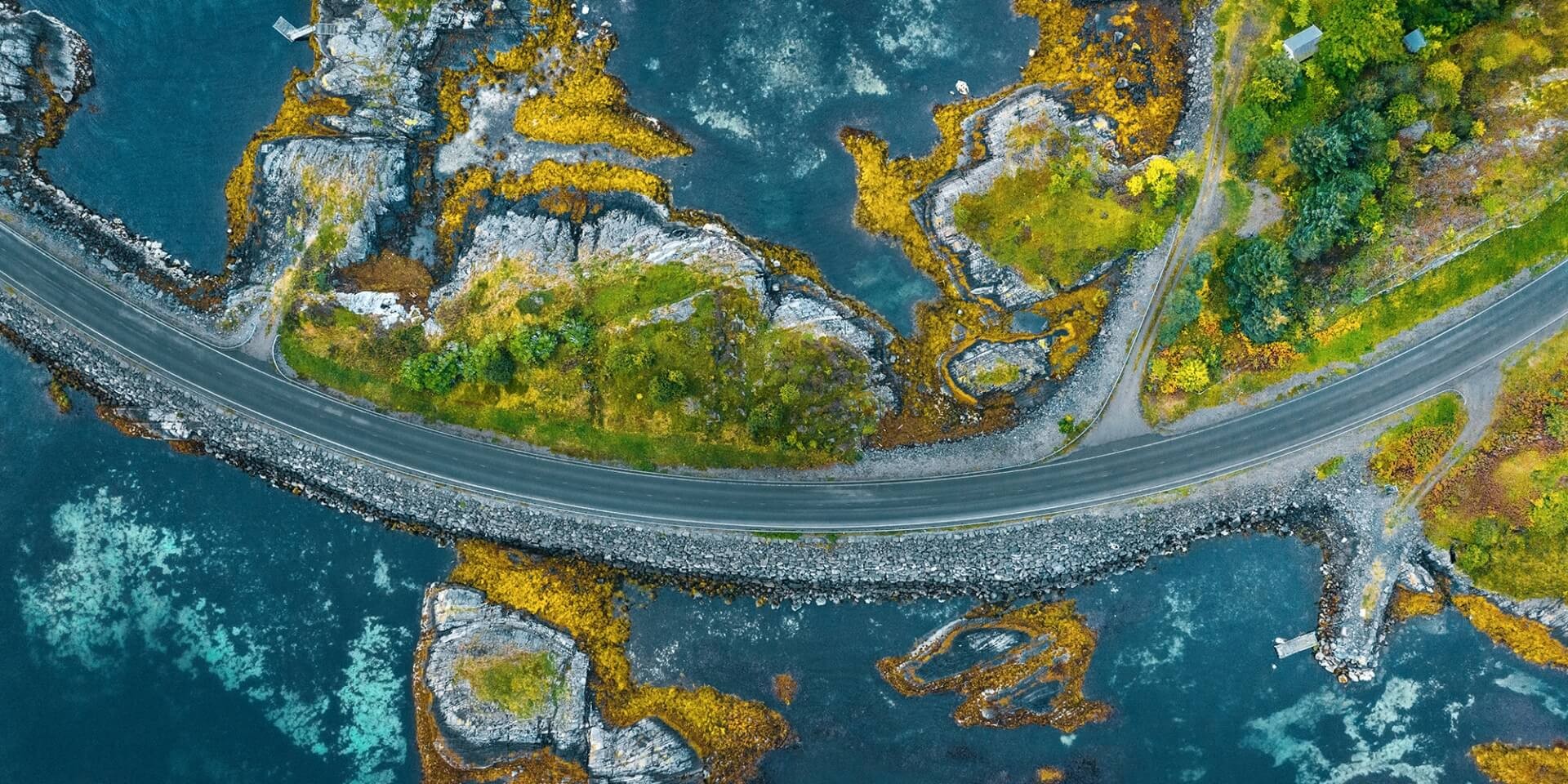
Plan Your Trip
Use these excellent tools to help plan your trip to Lofoten and navigate Norway's scenic routes and public transit options
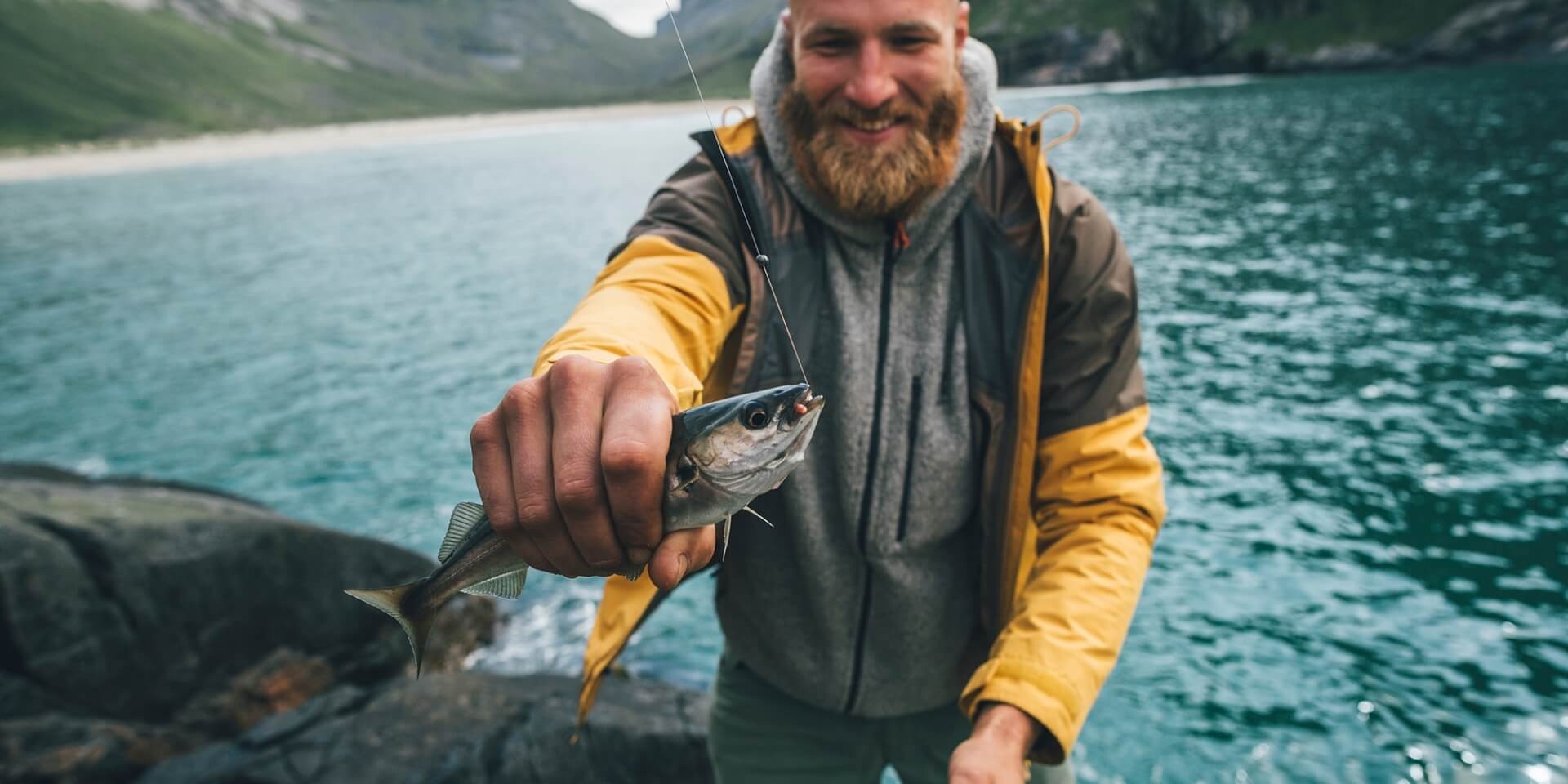
Sustainability
Respecting and Protecting Lofoten’s Natural Beauty
Lofoten is renowned for its stunning landscapes, abundant wildlife, and unique ecosystems. As a visitor, you have an important role in helping preserve this fragile environment. Practicing sustainable tourism helps ensure that Lofoten remains beautiful and accessible for future generations. Here are some key ways you can show respect to nature and contribute to its preservation:
Stay on Marked Paths:
Walking on designated trails helps protect delicate vegetation and prevents soil erosion. Straying from paths can cause long-lasting damage to plants and destabilize trails, which are difficult to restore in Lofoten’s unique climate.
Respect Wildlife and Their Habitat:
Lofoten’s wildlife, from seabirds to marine animals, is a valuable part of the ecosystem. Always observe animals from a distance to avoid disrupting their natural behaviors. Avoid feeding wildlife, as human food can be harmful and alter their natural diets.
Pack Out All Waste:
Lofoten has a “leave no trace” policy, meaning visitors are responsible for taking all waste with them, including food wrappers, water bottles, and organic waste like fruit peels. Use designated waste bins and recycling stations whenever possible.
Avoid Disturbing Natural and Cultural Sites:
Many parts of Lofoten have historical and cultural significance. Respect any signs or barriers around such sites, and avoid taking rocks, plants, or other natural souvenirs. Preserving these areas helps maintain Lofoten’s cultural heritage.

Reduce Water and Energy Use:
Many accommodations in Lofoten are committed to sustainability. Help by conserving water during your stay and turning off lights, heating, and electronics when not needed.
Limit Single-Use Plastics:
Bring a reusable water bottle, food containers, and bags to minimize plastic waste. Lofoten’s coastal environment is especially sensitive to plastic pollution, which can harm marine life and degrade the scenery.
Rent Equipment Responsibly:
Consider renting outdoor gear from eco-friendly services like Retur, which offers quality outdoor equipment to reduce the need for single-use items. Renting reduces waste, supports local businesses, and ensures you have suitable gear without the environmental cost of buying new items for short-term use.
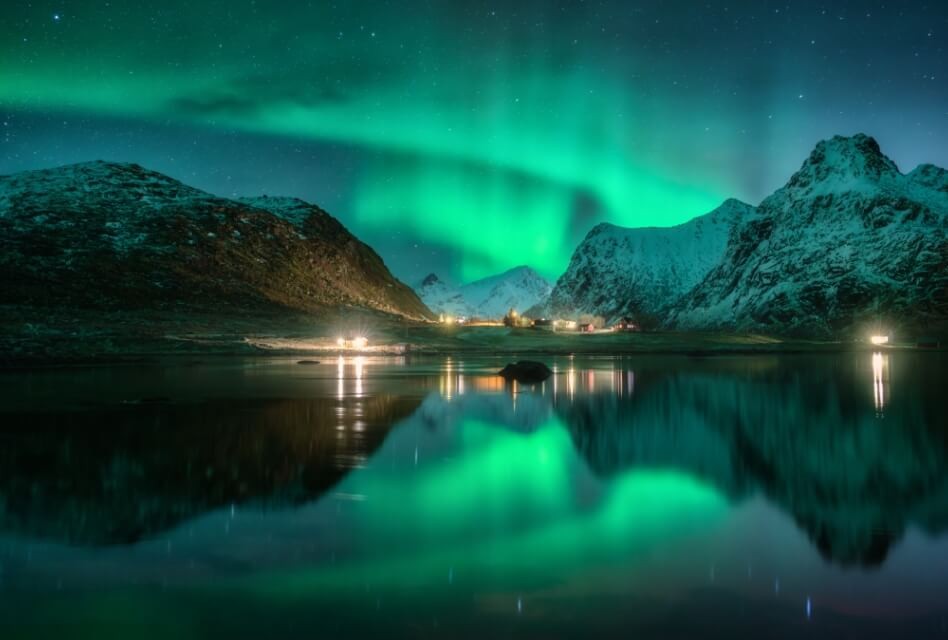
Watch Lofoten & Northern Norway travel guide
